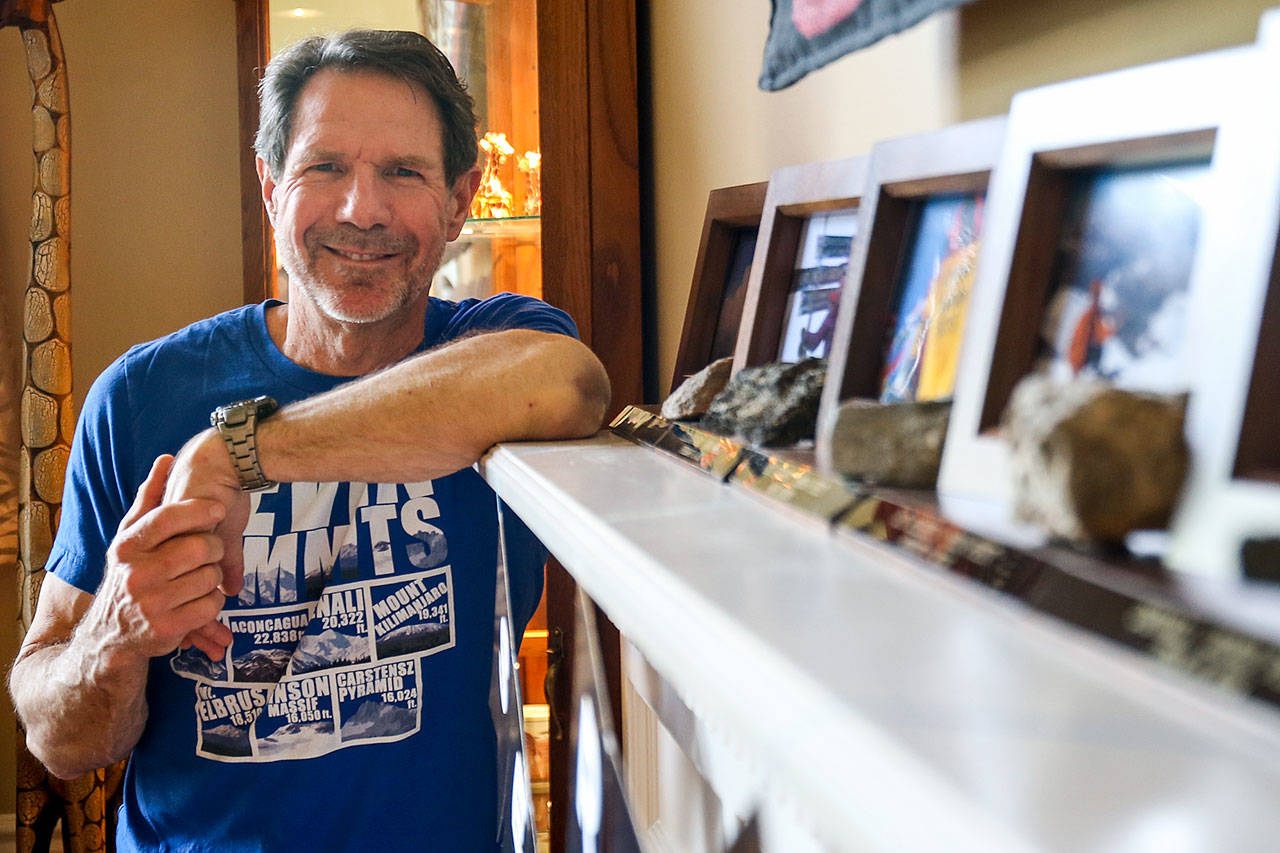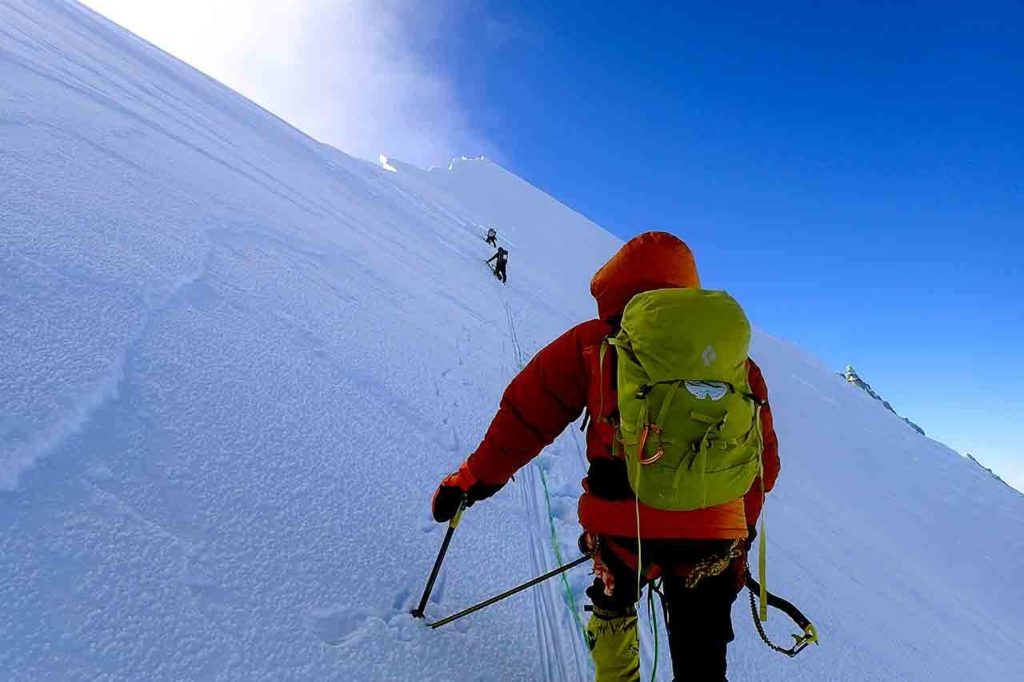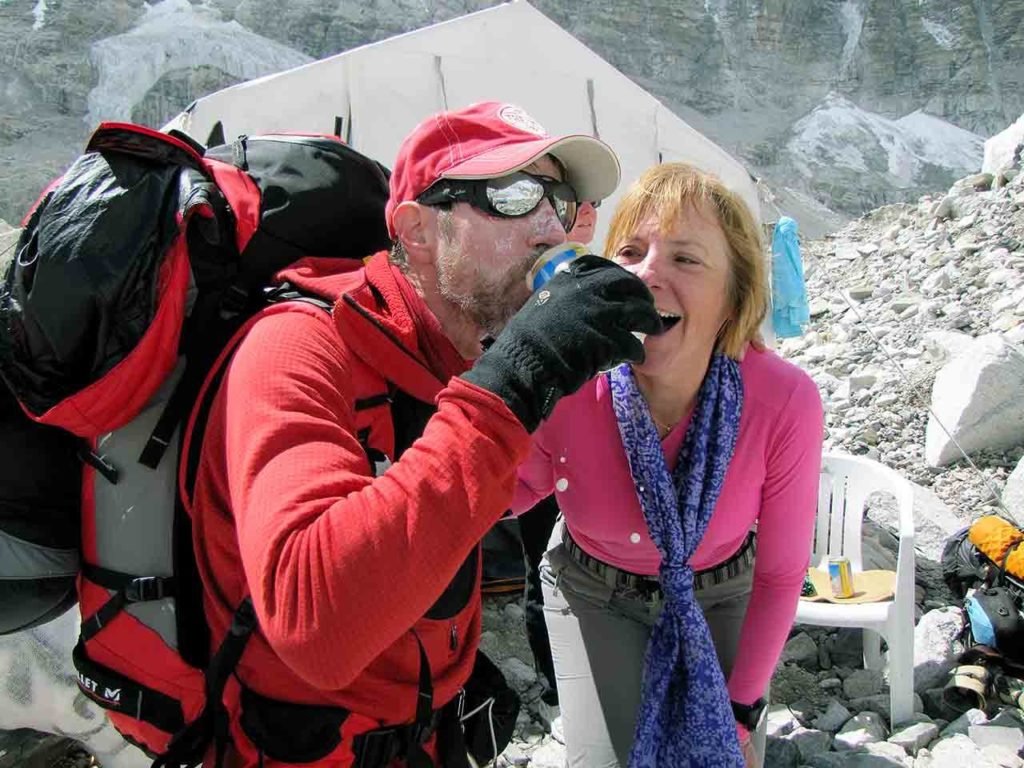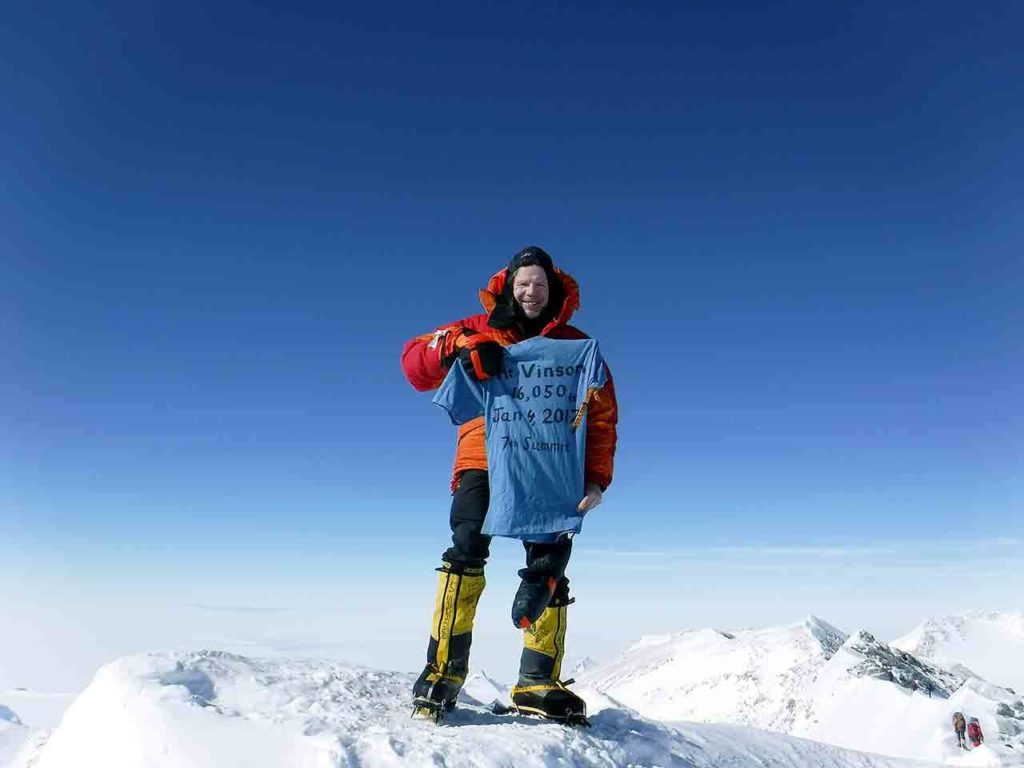MUKILTEO — Rick Thurmer was just 12 when he added his name to the summit register on Mount Whitney.
He and his father completed the trek in one day, starting before sunrise and returning to the trailhead after dark.
It was an arduous climb to the 14,505-foot peak in the Sierra Nevada mountains — the highest in the contiguous United States. He grew tired along the 22-mile trail. He would take micro naps every 400 yards or so.
“I know a lot of people would have said, ‘I’m never doing that again.’ ” Not Thurmer. He has wanted to climb ever since.
Nearly five decades later, on Jan. 4, Thurmer, 61, looked out at a glacial panorama from the 16,050-foot viewpoint of Mount Vinson, Antarctica’s tallest mountain. The accomplishment meant much more than another entry into his lengthy climbing resume.
He had achieved something fewer than 500 people in the world can lay claim to — summiting the highest peaks on the world’s seven continents.
It began in 1974, when at 18 he climbed Mount Aconcagua in Argentina. The goal was always there. But it would be another 36 years before he could resume his quest of completing the Seven Summits.
During that time, he and his wife, Allie, had three sons: Sean, Derek and Ryan. From the time they were born until they were in their mid-teens, his seven summits dream was deferred. There were days even Thurmer had doubts it could ever happen.
His priority was their children. There were Boy Scout campouts and family biking and camping trips, plus his fitness wasn’t summit-ready.
At the end of 2008, he began training again to summit. The Mukilteo man intensified his workouts to include biking, running and weightlifting. One regimen included walking an 8-mile trail with a 70-pound pack, then biking it, and then running it.
He completed the climb of 19,341-foot Mount Kilimanjaro in Tanzania in February 2009.
Three months later, he was part of a group attempting to summit 20,320-foot Denali in Alaska, North America’s tallest mountain. The ascent required a steep, technical climb along its West Rib. Yet the biggest challenge was the weather — high winds and close to zero visibility.
They spent 12 days waiting in their tents for the weather to clear. Food and fuel supplies dwindled.
“There’s a point in every expedition where you’re cold, tired, dirty, and a little miserable in the tent,” Thurmer said. “You say, ‘I could be at the beach, but I’m here.’ ”
The climb was called off, one of the few times weather prevented Thurmer from summiting.
It was another year before his next Seven Summits attempt. This one nicknamed The Top of the World, Mount Everest.
“You pray a lot”
The closest airport to Mount Everest is Lukla, Nepal, which has earned YouTube fame as the world’s most dangerous airport. A crowd gathers around its fenced contours to watch and photograph the aerobatic choreography.
It’s just 87 miles east of Kathmandu, but the plane has to negotiate a flight path to an airport at an elevation of more than 9,000 feet, surrounded by the Himalayas.
It requires the pilot to stall the plane just before touchdown. That triggers a screeching stall warning buzzer that can be heard in the aircraft cabin, the prelude to landing on a treacherously short uphill runway.
“It was exhilarating and probably the most dangerous thing we did on the entire trip,” Thurmer said.
He and his wife began the 10-day, 35-mile trek to base camp, traveling slowly to acclimate to the area’s high altitude. Base camp is at 17,600 feet — some 3,000 feet higher than Mount Rainier.
There’s about half the amount of oxygen at base camp as at sea level.
Oxygen levels at Everest’s 29,028-foot peak are even thinner — about a third of those at sea level.
The camp was pure glacier ice strewn with rocks and little streams of melting ice.
“I remember the glacier shifting, cracking and groaning all the time, day and night, as the glacier moved and flowed,” Thurmer said.
Nighttime temperatures sometimes fell to 40 below zero.
One day Thurmer and his wife went for a hike, climbing to 18,700 feet on a nearby mountain. Allie became ill, and was diagnosed with pulmonary edema, fluid in the lungs that makes it difficult to breathe.
She was told to leave base camp and descend to Pheriche, a village at 14,340 feet.
She refused, wanting to stay at base camp while her husband attempted to summit.
The base camp chef gave her a water bottle to help warm her at night. She was given oxygen to help her sleep, and gradually recovered.
Once the summit attempt was under way, the climbing team would make a radio call to base camp each evening. Allie had about a minute to talk to her husband.
“You pray a lot. You do worry,” she said. “But it’s his passion. It’s hard to say no. I guess I’ve just learned to live with it.”
On day six of the summit climb, word spread through base camp that something had gone wrong. Allie Thurmer asked the radio operator in contact with the team for information. “Go away. Come back tomorrow,” he told her, wanting to give all his attention to managing the emergency from afar.
“That was terrifying,” she said. “We didn’t know what had just happened. Really talented people die on mountains.”
“Your husband’s a hero”
Thurmer set out for the summit at 9 p.m. on May 16, 2010. The next morning, he reached Hillary Step, the last 200 feet that separate climbers from Everest’s 29,028-foot summit. With its 39 feet of near-vertical rock face, it is considered the most technically challenging part of the climb.
“It pounds on you emotionally to say I’ve done all this, and now I have to do that too?” Thurmer said.
He reached the peak at 10:30 a.m. and he took in the magnitude of the moment.
Another climber, Bonita Norris, 22, from Great Britain, soon joined him.
Thurmer started down the mountain and reached the first stopping point about 12:30 p.m. He was running low on oxygen and separated from his Sherpa. Thurmer decided to wait for Norris.
A passing climber told him she had fallen not long after beginning her descent, suffering whiplash and badly wrenching her neck.
Norris and a Sherpa reached Thurmer about 2:30 p.m. She could barely walk.
The plan was for the Sherpa to descend the mountain first, followed by Norris and Thurmer.
In the confusion, the Sherpa took off down the mountain with Norris’ pack, containing her mountaineering mitts and the radio that would have provided contact with base camp.
Norris found one spare mitten. Thurmer gave her one of his, and tucked his unprotected right hand into his sleeve. Norris descended the mountain backward, hanging on to a fixed line.
They reached a flat spot no bigger than a laptop. It was late afternoon. The wind was blowing horizontally. Thurmer paused to try to warm his hand.
It was there that one Sherpa arrived with a mountaineering mitt for Norris, allowing Thurmer’s hand to again be protected. A second Sherpa arrived with oxygen for Norris.
They made their way down to a spot on the mountain known as the Balcony, elevation 27,500 feet.
Thurmer, an Everett Clinic physician, was concerned that Norris was beginning to hallucinate and could have high altitude cerebral edema, a life-threatening swelling of the brain.
There was medicine in a first aid pack to treat it. But it was frozen. He put it into his mitt to warm it.
By the time he descended to the South Col, where climbers often camp, it had thawed. Another climber, also a doctor, hiked up the mountain to give Norris the injection.
The next time Allie walked up to the radio operator, he told her: “Congratulations, your husband’s a hero.”
Norris credited Thurmer with saving her life.
Thurmer arrived at base camp 25 hours after he left for the summit. Allie was there to greet him.
A photo captures their celebration. Allie had ordered an Everest Beer, portered to base camp on a yak. She is laughing with joy as Thurmer, his nose and cheeks peeling from exposure to the cold, takes the first sip.
“Where I feel most alive”
There was little breeze atop Mount Vinson in January. Thurmer had time to look out at the surrounding sea of ice — a scene at once austere and majestic. A fitting capstone to his life-long goal of scaling the world’s seven highest summits.
He was pleased his quest had come to an end. But he still yearned for more.
Twelve days later, he was about 18 miles away, ascending 15,919-foot Mount Tyree. It was 30 below, among the coldest climbing conditions he has ever endured.
Until this year, only 10 men had made it to Tyree’s summit. Thurmer’s climbing group included Victor Saunders, 66, a French mountain guide and author; and the first woman to ascend the mountain, Pachi Ibarra, from Chile.
Thurmer tends to talk more about Tyree than Vinson, in part because he considers it one of his two most technically challenging climbs.
It required a 25-hour summit day. The route, known as the Grand Couloir, is steep. Climbers progress by kicking spiky crampons into the ice with each step.
And far fewer people have scaled it. In fact, he was the twelfth, the same number, he points out, as people who have walked on the moon. A summit photo of him shows him displaying a Seahawks “12th man” flag.
Climbing the world’s most-difficult and tallest summits “is where I feel most alive,” Thurmer said.
It should come as no surprise he has a checklist of the peaks he next wishes to climb. They include the seven highest mountains in North America, some of the Cascade peaks, a climb of Mount Baker with his son, Derek, Chile’s Ojos del Salado, South America’s second highest mountain, and Mount Kenya in Africa.
The first of those climbs is scheduled to begin in a few days when he plans to summit Piz Badile, on the border of Italy and Switzerland, with Victor Saunders.
Some of Thurmer’s favorite climbing stories aren’t what you would expect. The beauty as he descended Mont Blanc in the Alps. And the glow of sunrises on Aconcagua and Everest. The memory of those moments fill him with wonder and joy.
“To me, if I’m not making those mental pictures, I shouldn’t be there.”
His lifelong passion has taken him to summits in France, Italy, Russia, Indonesia, Canada, Argentina, Nepal, and Antarctica, as well as peaks in the United States and Canada.
“It’s his way of seeing the world,” Allie Thurmer said.
It all began in 1968 when Thurmer, at 5 feet 5 inches and weighing 120 pounds, completed the round trip from trailhead to summit of Mount Whitney in a day.
“I didn’t know what I was getting into, nor did I know that one trip would stimulate my lifelong passion,” he said.
Sharon Salyer: 425-339-3486; or salyer@heraldnet.com.
Seven summits
Here is the order and date Rick Thurmer climbed the tallest mountain on each continent. (Note: there is not universal agreement among mountaineers on which peaks belong on the seven summit list.)
1) Aconcagua, Argentina 22,834 ft. Feb. 11, 1974
2) Mount Kilimanjaro, Tanzania 19,341 Feb. 10, 2009
3) Mount Everest, Nepal 29,028 May 17, 2010
4) Mount Elbrus, Russia 18,510 ft. Aug. 21, 2012
5) Denali, Alaska 20,320 feet June 15, 2014
6) Carstensz Pyramid, Indonesia 16,024 ft. Aug. 20, 2016
7) Mount Vinson, Antarctica, 16,050 ft. Jan. 4, 2017
Talk to us
> Give us your news tips.
> Send us a letter to the editor.
> More Herald contact information.






























